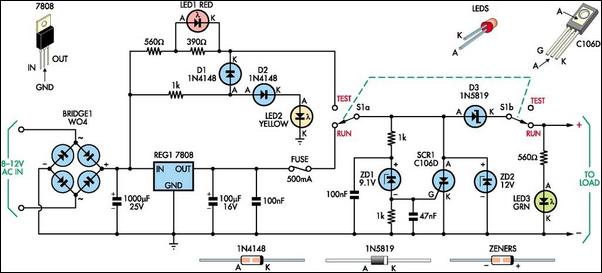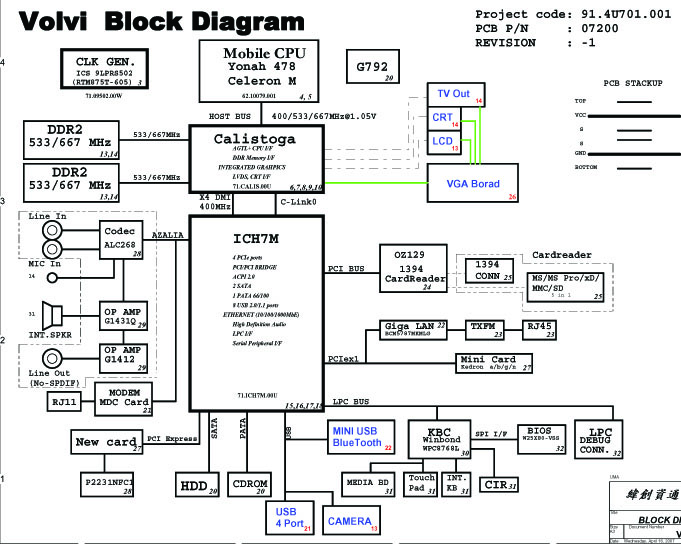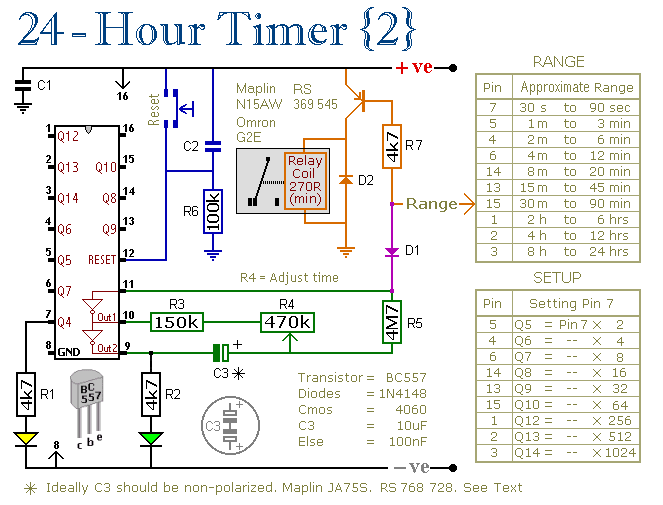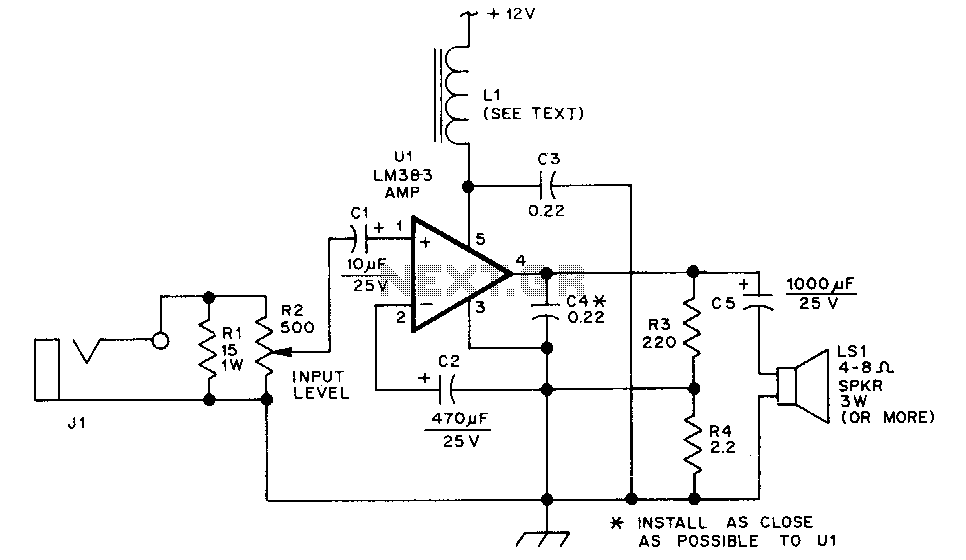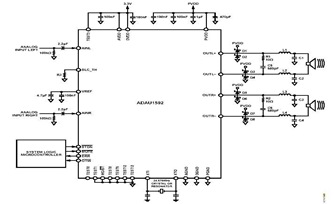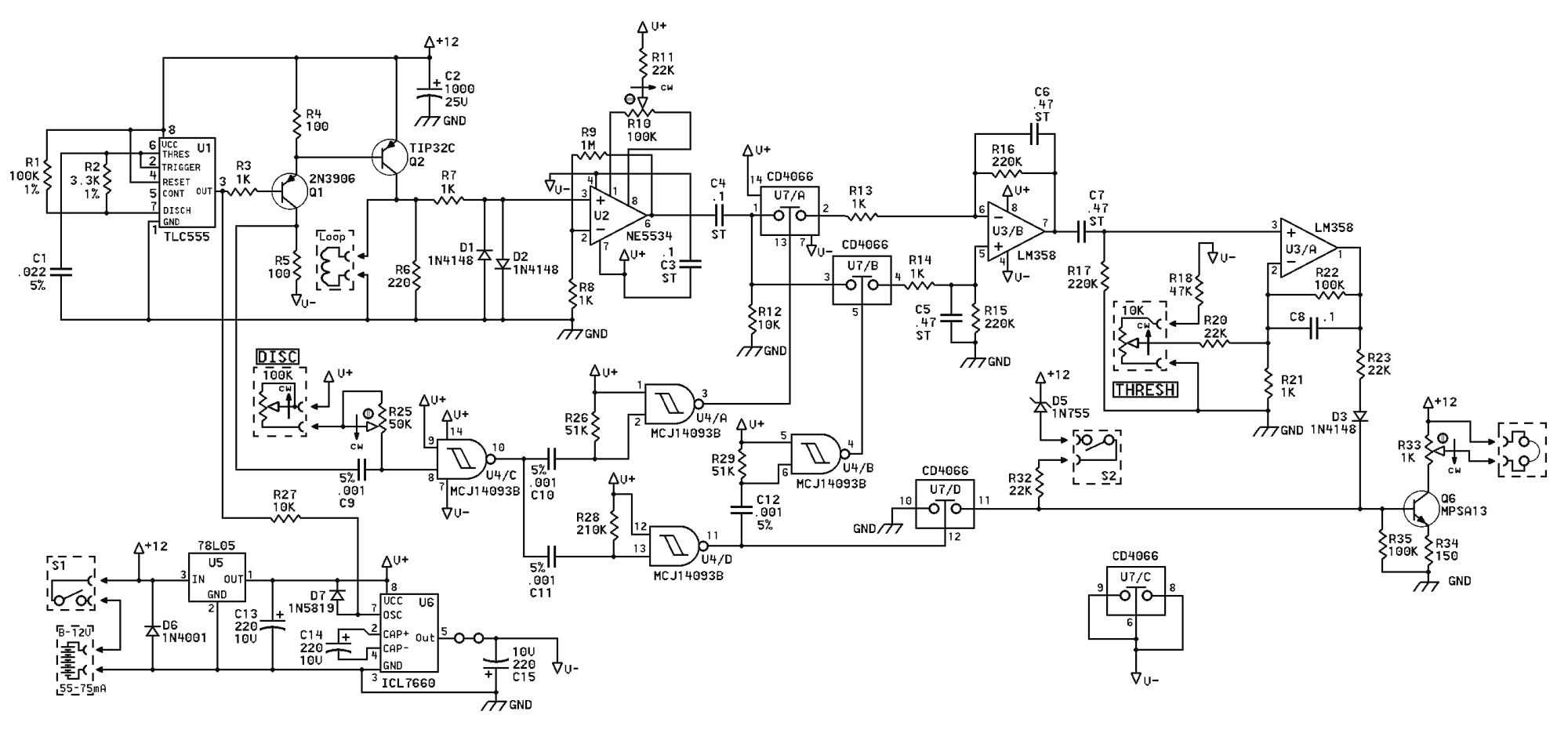
uPC1237 speaker protection schematic
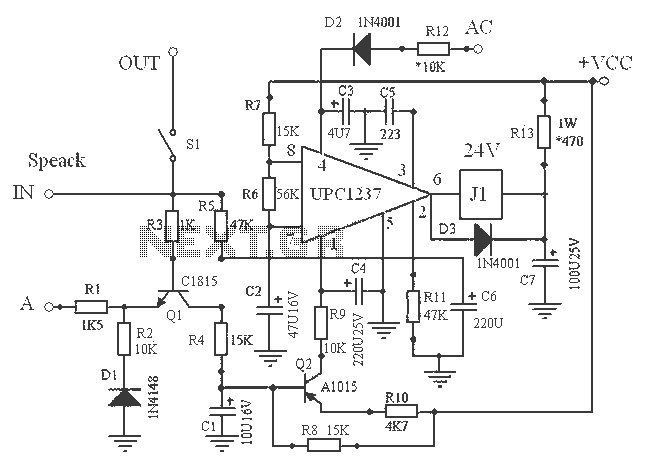
The uPC1237 operates with a single power supply, with an operating voltage range of 25V to 60V, typically used directly as a positive power source (+Vcc) for amplifiers. The relay coil voltage is 24V DC, and the relay driver circuit has a current limit of 80mA. When the relay is energized, the pin voltage is approximately 0V. If the average voltage Vcc is 24V, a step-down current limiting resistor (R12) must be inserted to prevent over-current heating damage to the relay and integrated circuit. The relationship between resistor R12, average power consumption, and Vcc voltage is detailed in Table 1. The uPC1237 features a power-on delay at its output, determined by resistor R7 and capacitor C3, which allows for a quiet time after energizing until the amplifier circuit stabilizes. This delay ensures that the relay contacts connect to the speakers without generating power-up impact noise. Increasing the values of C3 or R7 will extend the mute time. The maximum supply voltage for the uPC1237 is 8V. Depending on the Vcc value, different resistances for R8 are specified in Table 1. The uPC1237 also includes an AC power detection terminal for muting the amplifier. When the amplifier power switch is off, the secondary AC voltage from the transformer disappears, causing capacitor C2 to discharge quickly through a foot resistance, resulting in a rapid voltage drop at the pin. This internal circuit controls the relay to disconnect the amplifier output from the speakers, preventing any impact noise during the transition when the power output is at zero level. The maximum limit voltage for this foot is 10V, and variations in the monitored AC voltage from the amplifier's transformer secondary winding require different values for the current limiting resistor R6. If R6 is improperly sized, the speaker protection circuit may not function correctly. The correspondence between AC voltage and resistance R6 is provided in Table 2.
The uPC1237 integrated circuit is designed to facilitate efficient power management and protection in audio amplifier applications. Its ability to operate within a voltage range of 25V to 60V allows for versatile use across different amplifier designs. The relay driver circuit, with its specified current limit and the necessity for a current limiting resistor (R12), ensures that the relay operates safely without overheating, thus extending the lifespan of both the relay and the integrated circuit.
The power-on delay feature is critical in audio applications, as it minimizes the risk of audible noise during the amplifier's startup phase. The choice of R7 and C3 values allows for customization of the delay period, enabling designers to tailor the circuit to specific audio requirements. This is especially important in high-fidelity audio systems where any noise can detract from the listening experience.
The AC power detection mechanism enhances the safety of the audio system by ensuring that the speakers are disconnected during power transitions. This feature not only protects the speakers from potential damage due to sudden changes in output but also contributes to a more seamless user experience. The rapid discharge of capacitor C2 is a key aspect of this functionality, allowing for quick response to changes in power state.
Overall, the uPC1237 provides a robust solution for managing power and protecting audio systems, with detailed specifications and design considerations that allow for effective implementation in various amplifier configurations. The provided tables serve as essential references for designers to make informed decisions regarding component selection and circuit design, ensuring optimal performance and reliability of the audio system.uPC1237 by a single power supply, operating voltage range of 25v ~ 60v, usually the direct use of the amplifier as a positive power source + Vcc power. Relay coil voltage is DC 24v, because foot relay driver-side current limit is 80mA, in energize the relay timely, pin voltage is about 0v, if the average voltage Vcc 24v, must be inserted step-down current limiting resistor R12, the relay and integrated circuit are not caused by over-current heat damage, the correspondence between the resistance R12, the average power consumption and Vcc voltage in Table 1. Buffs can look-up table 1 to determine the average voltage value R12 according to vcc own amplifier. uPC1237 foot end is power-on delay, determined by R7, c3 boot parameters quiet time after that is energized until the amplifier circuit reaches a stable equilibrium, let the delay circuit relay contacts connected speakers.
This can eliminate the power-up impact noise, increased c3 or R7 extended boot mute time. uPC1237 feet supply side, the maximum limit is 8v. When Vcc is not the same, R8 respective different resistance, determined look-up table 1. uPC1237 foot AC power detection terminal for the amplifier off mute. When the amplifier power switch is off, the transformer secondary AC voltage immediately disappear, c2 small capacitor discharges through foot resistance quickly, pin voltage drops rapidly, internal circuit control relay, the output of the amplifier and the speakers disconnected to prevent during the transition the power output zero level when the speaker out of balance current impact (ie impact noise off) after a power outage. foot maximum limit voltage 10v, when the monitored power amplifier transformer secondary winding AC voltage values are different, the partial pressure of the current limiting resistor R6 respective different values, are too big too small speaker protection circuit will not work, Ac AC voltage and resistance R6 correspondence between Table 2.
The uPC1237 integrated circuit is designed to facilitate efficient power management and protection in audio amplifier applications. Its ability to operate within a voltage range of 25V to 60V allows for versatile use across different amplifier designs. The relay driver circuit, with its specified current limit and the necessity for a current limiting resistor (R12), ensures that the relay operates safely without overheating, thus extending the lifespan of both the relay and the integrated circuit.
The power-on delay feature is critical in audio applications, as it minimizes the risk of audible noise during the amplifier's startup phase. The choice of R7 and C3 values allows for customization of the delay period, enabling designers to tailor the circuit to specific audio requirements. This is especially important in high-fidelity audio systems where any noise can detract from the listening experience.
The AC power detection mechanism enhances the safety of the audio system by ensuring that the speakers are disconnected during power transitions. This feature not only protects the speakers from potential damage due to sudden changes in output but also contributes to a more seamless user experience. The rapid discharge of capacitor C2 is a key aspect of this functionality, allowing for quick response to changes in power state.
Overall, the uPC1237 provides a robust solution for managing power and protecting audio systems, with detailed specifications and design considerations that allow for effective implementation in various amplifier configurations. The provided tables serve as essential references for designers to make informed decisions regarding component selection and circuit design, ensuring optimal performance and reliability of the audio system.uPC1237 by a single power supply, operating voltage range of 25v ~ 60v, usually the direct use of the amplifier as a positive power source + Vcc power. Relay coil voltage is DC 24v, because foot relay driver-side current limit is 80mA, in energize the relay timely, pin voltage is about 0v, if the average voltage Vcc 24v, must be inserted step-down current limiting resistor R12, the relay and integrated circuit are not caused by over-current heat damage, the correspondence between the resistance R12, the average power consumption and Vcc voltage in Table 1. Buffs can look-up table 1 to determine the average voltage value R12 according to vcc own amplifier. uPC1237 foot end is power-on delay, determined by R7, c3 boot parameters quiet time after that is energized until the amplifier circuit reaches a stable equilibrium, let the delay circuit relay contacts connected speakers.
This can eliminate the power-up impact noise, increased c3 or R7 extended boot mute time. uPC1237 feet supply side, the maximum limit is 8v. When Vcc is not the same, R8 respective different resistance, determined look-up table 1. uPC1237 foot AC power detection terminal for the amplifier off mute. When the amplifier power switch is off, the transformer secondary AC voltage immediately disappear, c2 small capacitor discharges through foot resistance quickly, pin voltage drops rapidly, internal circuit control relay, the output of the amplifier and the speakers disconnected to prevent during the transition the power output zero level when the speaker out of balance current impact (ie impact noise off) after a power outage. foot maximum limit voltage 10v, when the monitored power amplifier transformer secondary winding AC voltage values are different, the partial pressure of the current limiting resistor R6 respective different values, are too big too small speaker protection circuit will not work, Ac AC voltage and resistance R6 correspondence between Table 2.
